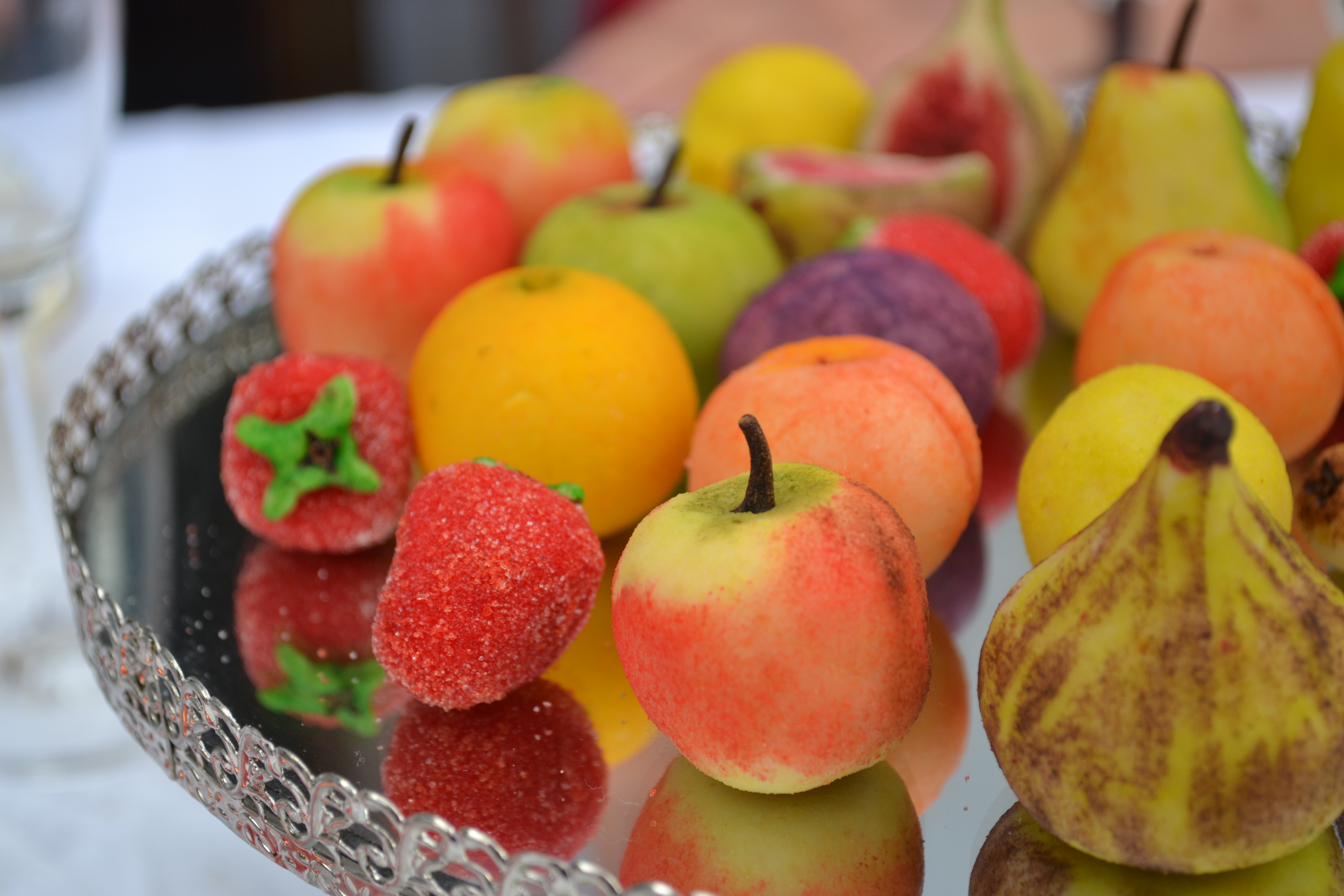 Many European countries claim to be the origin of marzipan.
However, it is believed that marzipan originated in Persia and was introduced
to Europe by Turks. Which European country was the first one that was
introduced to marzipan? We may never find out. However, stories from different
countries are worth retelling.
Many European countries claim to be the origin of marzipan.
However, it is believed that marzipan originated in Persia and was introduced
to Europe by Turks. Which European country was the first one that was
introduced to marzipan? We may never find out. However, stories from different
countries are worth retelling.
According to legend, at the Tallinn Town Hall Pharmacy worked a bright apprentice named Mart.
One day, one of the members of the city council got sick. He came to the
pharmacist to make him a miraculous remedy. But the pharmacist himself got cold
and asked Mart to prepare the remedy. Mart being not only a smart apprentice,
but also with a bit of mischief up his sleeves, added almonds received from
merchants traveling to the far lands, “Just to make it a bit sweeter and
tastier.” Tastier it was, the council was so happy with the remedy that he
ordered more on regular basis. The remedy was further modified into a paste of
grinded almonds and sugar and in honor of its creator was called Mart’s Bread.
Today known as marzipan.
 The old Hanseatic cities of Tallinn and
Lubeck are both fully convinced that the right of discovery of
marzipan belongs to their city. The city of Lubeck is famous throughout Germany for
its exquisite marzipan.
Thanks to its location by the river in northern Germany, it once was the
leading city of the Hanseatic League.
Many goods from Orient travelled through Lubeck
including almonds, sugar and spices. Today, because of its extensive Brick
Gothic architecture, it is a UNESCO World Heritage Site.
The old Hanseatic cities of Tallinn and
Lubeck are both fully convinced that the right of discovery of
marzipan belongs to their city. The city of Lubeck is famous throughout Germany for
its exquisite marzipan.
Thanks to its location by the river in northern Germany, it once was the
leading city of the Hanseatic League.
Many goods from Orient travelled through Lubeck
including almonds, sugar and spices. Today, because of its extensive Brick
Gothic architecture, it is a UNESCO World Heritage Site.
According to local legend, when Lubeck was under a
military siege and was running out of goods, one of the bakers made bread out
of remaining supplies of almonds and sugar. When the ‘marzipan’ bread was
gaining its popularity, a young man came to Lubeck and became an apprentice to
a confectioner. His name was Johann Georg Niederegger. When the talented Johann
achieved the experience he needed, he opened his own shop. He quickly became so
popular for his exquisite marzipan that he was supplying even royalty with it.
Today, Niederegger is the best known marzipan brand name in Germany praised for
its superb quality.
According to legend, in the middle ages, there was a
Venetian baker, who had a daughter. The baker was busy making pastries for the
weekend. So he asked his daughter for help to mix a small portion of chopped
almonds into a large batch of cake dough. The girl was so in love and
daydreaming that she switched the ratios putting a large amount of almonds into
a small batch of cake dough. When the father discovered the mistake, he was furious
and rushed the daughter off from the bakery for wasting so many almonds. He
threw his hands up and lamented. However, when he munched on a piece of what he
considered ruined dough, he became still and amazed by the taste of raw dough.
It was the most delicious confection he has ever savored. The baker cut the
dough into small bits and sold it with great success. What he considered a
mistake at first turned into a blessing, which brought him great riches. He
named the bread marcipani in Latin, after the town’s patron St. Marcus.
According to legend, a wealthy Italian woman
commissioned a convent to be billed in Sicily. The nuns, who later lived there
were so grateful and wanted to make something special for community. Using
their creativity, they mixed chopped almonds with dough and shaped small pieces
of dough into animals and fruits. They got even more creative with painting the
animals and fruits with vibrant colors from natural dyes. The sweet treats
became so popular especially with kids that they kept the nuns pretty busy.
According to legend, after a battle, there was
famine. There was no wheat to make bread. However, there was plenty of sugar
and almonds. The nuns from the nearest convent outside Toledo walls mixed the
almonds with sugar and fed hungry people. The sweet delicacy was quite
different from regular bread, but it worked for the survival time. Much later,
it became famous as a sweet treat.